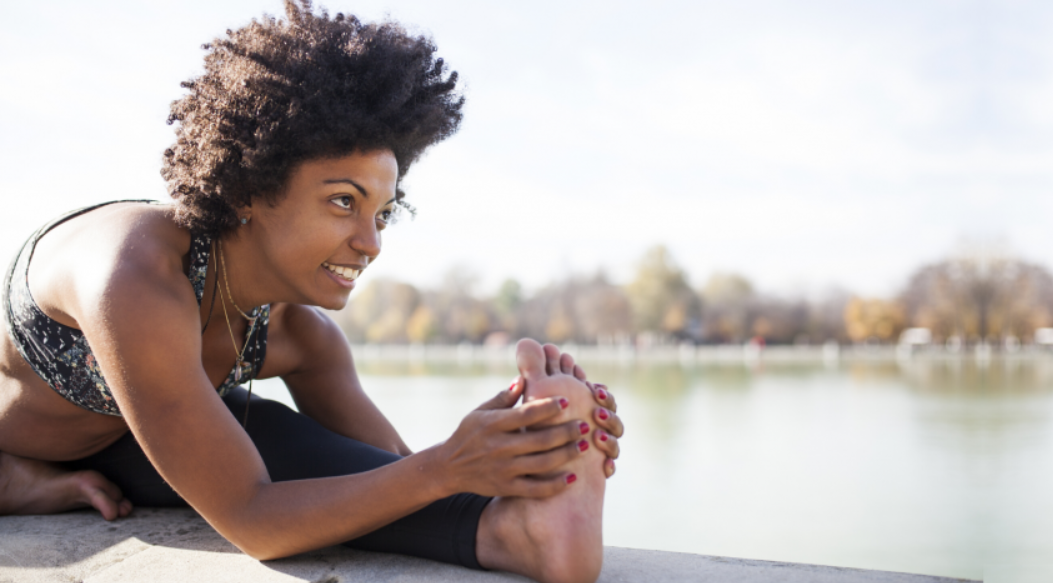Most yoga students have musculoskeletal imbalance in class, which will affect their practice in many ways, and may even make them vulnerable to injury.

Let’s discuss the role of muscle imbalance in yoga and why stretching muscles may not produce the results you expect.

1: What are musculoskeletal imbalances and how do they affect our yoga practice? Musculoskeletal imbalances occur when muscles or muscle groups become too tight or weak and are no longer able to perform their normal functions.
This then has spillover effects on other parts of the body, which must then be compensated.
For example, it is common for the transverse abdominal muscle (the deepest layer of the abdominal muscle) to be closed.
Transverse abdominal muscle is the key muscle to support the waist.
Therefore, for yoga students whose transverse abdominal muscle can not normally participate, there may be some back problems.
They do not have a stable lower back or a stable lumbar spine when moving.
As a result, they end up moving unevenly, causing the joints to become more unbalanced and causing some muscles to work harder and become very tight.
So it makes them unbalanced.
When people start yoga from these imbalances and are expected to enter warrior or downward dog pose without the necessary stability of the core body, unfortunately, it often perpetuates these imbalanced patterns.
2: Therefore, the imbalance of transverse abdominal muscle is a factor, which will lead to insufficient core stability.
Do you think there are any other common musculoskeletal imbalances that often affect yoga students? Yes, especially at the waist and hips.
Another common imbalance is the gluteus maximus and gluteus medius.
They usually do not participate in the best way or in the appropriate amount.
So this will reduce the stability of our hips.
Therefore, many yoga students have these unstable parts in their lumbar spine and buttocks.
It is important to learn how to use your hips so that you can move more effectively.
This means learning not to tighten or grasp the hips, but to participate in them in a way that helps stabilize the hips and pelvis.
3: We often think of a lack of flexibility, such as hamstrings, and how it affects our yoga practice.
But you mean that the inability to exercise muscles effectively also plays an equally important role? It often comes together.
For example, if you consider the lack of flexibility in the hamstring, both the hamstring and gluteus maximus can stretch the hips.
Gluteus maximus is a very powerful muscle, which should be used when we stretch our legs behind us every time we walk.
But if our glutes don’t work properly, our hamstrings will overwork.
So you can stretch your hamstrings at will every day, but if you overuse them every time you walk, they won’t stretch and they will become tight.
Therefore, when considering how to stretch the hamstrings in the best way, one thing to pay attention to is to eliminate the overuse factor.
So by strengthening your glutes and learning how to use them in asanas and yoga exercises, this in turn can help you learn how to use them in your daily life.
This will reduce the over stimulation of the hamstrings, and then you can actually stretch them more effectively.
If you just want to stretch the hamstrings, but never retrain your hips, the hamstrings will never actually become so flexible, because they will be constantly stimulated by overwork when you walk, which will produce a sense of tension.
4: What is the root cause of musculoskeletal imbalance? Simple lack of use or awareness, for example, when we walk incorrectly? Or is there a psychological or emotional component? Yes.
After research, find out why these muscles are always closed.
He found it very similar to people with neurological disorders.
Therefore, if our nervous system is always in a fight or flight response, our muscles will also be triggered in this fight or flight response.
Therefore, if we are in a state of psychological and emotional combat or flight, some muscles will always be active and open, which will close other muscles.
For example, the psoas major, the great hip flexor in front of the hip, is closely related to our sympathetic response.
If you are under a lot of stress and anxiety, your psoas muscle will be hyperactive, which in turn will close the opposite muscle, the gluteus maximus.
So, part of the reason why gluteus maximus doesn’t work properly is usually the opposite muscle promoting effect of psoas major.
So if you’ve been in a state of compassion, fighting or running away, and you try to stretch your psoas and hip flexors, it won’t have much effect.
They won’t go far.
By really relaxing the nervous system, entering the parasympathetic state and learning how to be in this parasympathetic state, we can relax the psoas and participate in the gluteus maximus.
Therefore, even if we can pay attention and realize how to alleviate and how to participate, it must take place from compassion to parasympathetic.
So, one thing yoga does, it is very unique.
Different from other forms of exercise, it also pays attention to the influence of mental state.
If I am very anxious, or if I am very anxious about my response to stimuli, it will affect the way my body muscles work.
Therefore, we can use more aspects of meditation and mindfulness in yoga to create a peaceful space and change our reactions to emotions and thoughts.
This calms the overactive nervous system and changes the firing pattern of the muscles to a healthier, normal tone.
5: You often work in chronic pain and yoga.
Is this related to chronic pain because these musculoskeletal imbalances make us prone to chronic pain? Of course..


